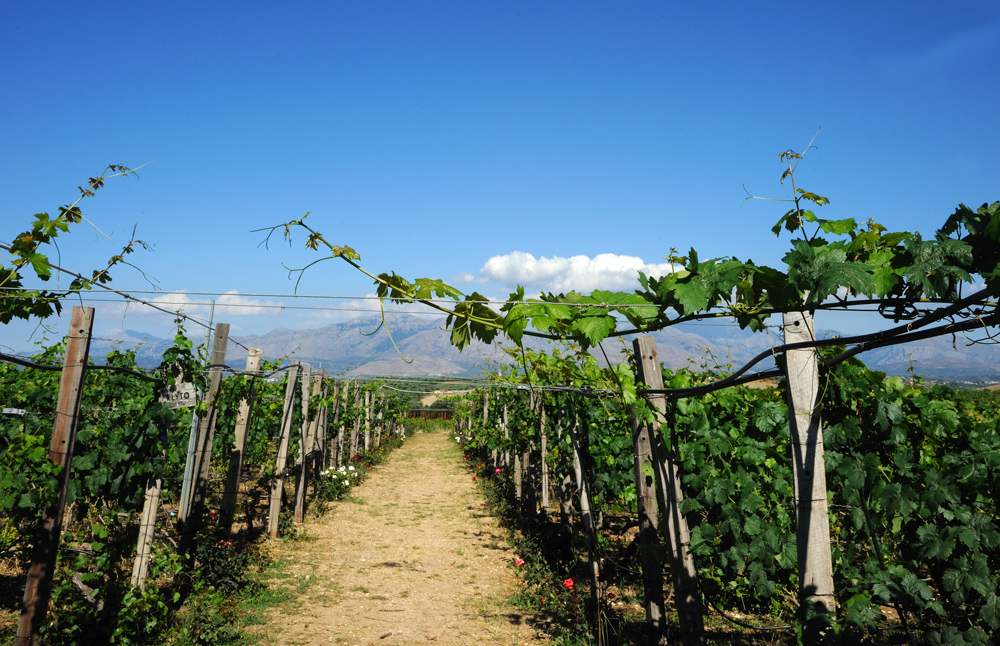
My comprehensive account of Greek viniculture, encompassing its history, wine laws, key inland regions, diverse wines, and my personal impressions, can be explored here. For insights into the distinctive wines of Santorini, delve here. Now, let’s turn our focus to the viniculture of Crete, the very birthplace of Greek viniculture and a land where its modern renaissance shines brightly.
The roots of European viniculture extend deep into Greece, with its origins traced to the Minoan civilization, which flourished on the island of Crete. Nearly 5000 years ago—though such antiquity often brings with it less precise dating—Cretans began crafting wine. The island’s landscape is adorned with archaeological remnants testifying to their active vinicultural endeavors: wine presses, amphorae with wine traces, and cellars. A remarkable discovery, the Vathypetro wine press near Iraklion boasts an age of 3500 years. Within the Palace of Knossos, vivid depictions of winemaking and wine consumption grace its walls, while its cellars once brimmed with amphorae. The allure of Cretan wine reached far beyond the island, evidenced by amphorae bearing Cretan insignias scattered throughout the Mediterranean basin. Even Egyptian pharaohs indulged in Cretan wines; palace murals capture scenes of Cretan ships arriving and unloading, while an amphora containing 3000-year-old wine was rescued from a sunken vessel.
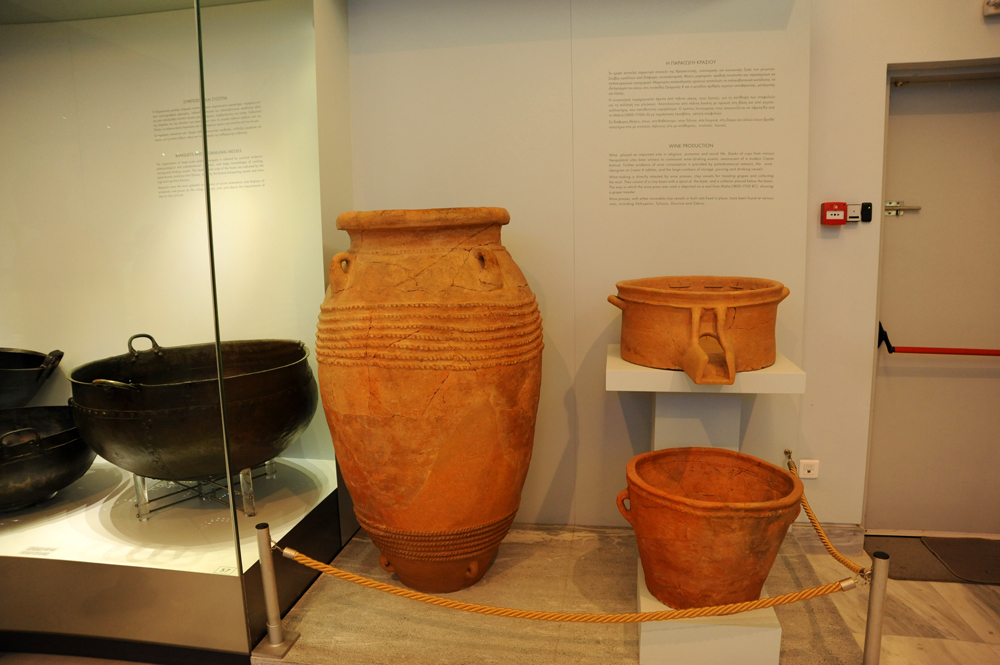
As the 2nd century unfolded, Greece found itself under the Roman Empire’s dominion. The Romans, with their unquenchable thirst for wine, turned their attention to Crete, transforming it into a vast Roman vineyard. From Crete, they imported a prized commodity: rich and sweet protropos wine, a libation cherished both by Romans and Greeks alike.
As Christianity gained a foothold and Byzantine influence took hold, Crete’s viniculture experienced a slight decline. However, the year 1205 ushered in a period of Venetian dominance for the island, much akin to Santorini. Under Venetian rule, Crete’s viniculture experienced a renaissance, with a flourishing of activity. For over four centuries, Crete adorned European tables with the renowned sweet Malvasia di Candia wine, its influence stretching to pivotal cities such as London, Paris, and Constantinople.
Yet, the advent of the Ottoman Empire and its disapproval of alcohol cast a shadow over Crete’s vinicultural legacy. Unlike Santorini, Crete did not secure special dispensation for wine production, causing its viniculture, much like the broader Greek landscape, to languish.
Following the cessation of Ottoman rule, Crete embarked on a journey of vineyard revitalization. This revival saw its wines gain recognition, albeit briefly, before the tumultuous waves of the 20th century—wars and upheavals—intervened. Thus, the viniculture of Crete, echoing the fate of Greece as a whole, endured a period of hardship until the 1980s. Greece’s entry into the European Economic Community (EEC) heralded a new chapter, one where competitiveness became an imperative.
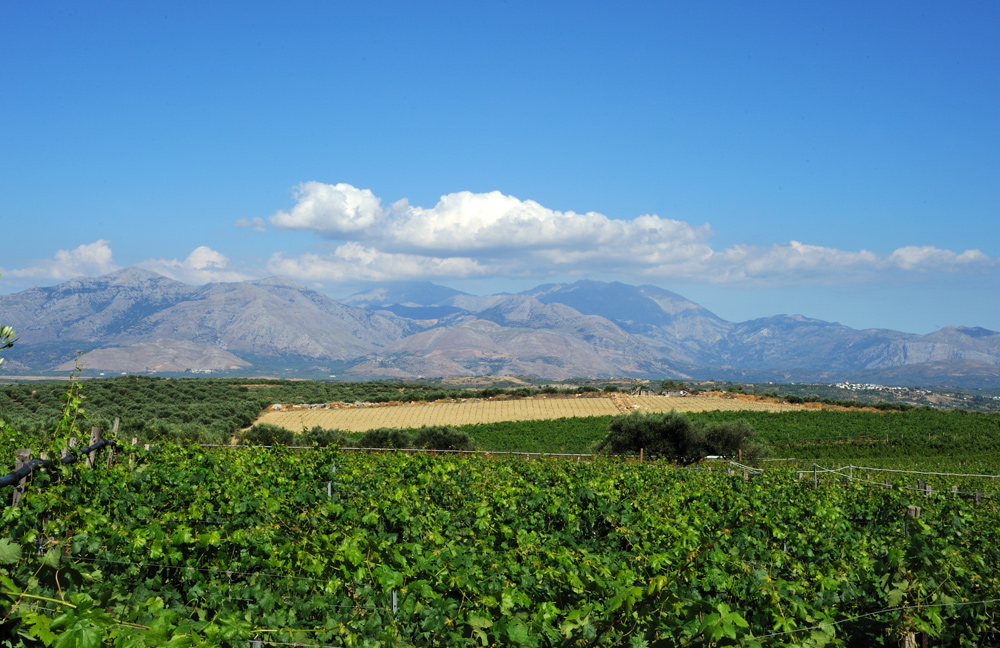
Crete’s climatic conditions are ideally suited for viniculture. As an elongated island stretching from West to East along the southern edge of the Aegean Sea, Crete enjoys a unique position. The island’s southern aspect is influenced by hot African winds, yet a lofty mountain range bifurcates it into southern and northern sections. The vineyards are predominantly situated on the northern side, shielded from the intense southern heat, and refreshed by the Aegean Sea’s gentle breezes. Many vineyards thrive at altitudes of 500 meters and higher, ensuring the retention of grape acidity through a necessary coolness.
The island is home to three key vinicultural hubs. The central part hosts PDO appellations Dafnes, Peza, and Arhanes. To the east lies PDO Sitia, and on the western side, another center takes shape. Beyond these PDO designations, Crete accommodates six additional regional appellations: Chania, Rethymno, Lasithy, Kissamos, Heraklion, and Crete itself.
Throughout history, Crete has preserved plenty of local, distinctive grape varieties. Interestingly, even those that are found elsewhere in Greece have developed their own unique characteristics due to prolonged isolation.
During the inception of Crete’s modern wine renaissance, winemakers, upon their return from Europe, inadvertently brought with them international grape varieties along with newfound knowledge. However, as is often the case, Crete soon recognized the value of cultivating local, exclusive grapes for crafting wines with global recognition. This prompted a shift back to indigenous varieties, harmoniously interwoven with international counterparts, a move that has been made across the entirety of Greece.
What are the most important grape varieties of Crete?
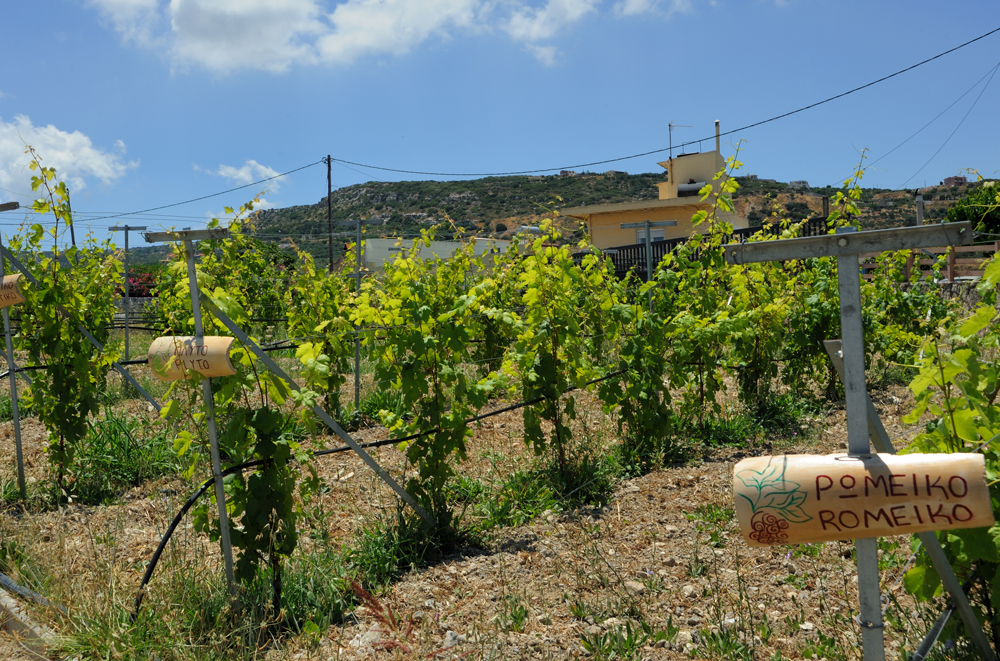
White Grapes
Vilana – shines as the star among the island’s white grape varieties. It produces a light, aromatic wine with vibrant acidity, making it an ideal choice for a sweltering summer day.
Vidiano is the grape responsible for crafting full-bodied, opulent white wines characterized by a luscious apricot aroma. During my visit to Titakis Winery, the Vidiano I sampled exuded a surprising fullness despite its modest 12% alcohol content. Curiously, it presented hints of malolactic fermentation, even though this technique wasn’t employed. Vidiano has earned the moniker “Greek Viognier.”
Dafni, on the other hand, imparts delicate white wines with a unique laurel aroma that echoes in its very name.
Muscat of Spina, a local Muscat clone, boasts elevated acidity and a remarkably thin skin. This combination yields refreshingly gentle, aromatic dry wines.
Malvasia di Candia, a descendant of the Malvasia that once catapulted Cretan wine to international fame during the Middle Ages (actually, Candia was an official name of Crete during the island’s period as a colony of the Republic of Venice), is now utilized for both dry and sweet aromatic wines.
Plyto, an ancient and nearly extinct variety, has been successfully reintroduced and is showing promising outcomes.
Red Grapes
Liatico proves an intriguing red variety. Its modest pigment content yields a pale hue, accompanied by medium and supple tannins. Despite its high sugar content, which contributes to elevated alcohol levels, Liatico maintains a refreshing acidity. Aromas of red fruits, figs, nuts, and leather harmoniously intertwine, resulting in a well-balanced, full-bodied wine that paradoxically feels light and revitalizing. At Toplou Monastery, I had the opportunity to savor such a delightful Liatico expression.
Kotsifali is akin to the Greek Merlot, delivering a gentle, low-tannin profile accompanied by elevated alcohol content. Cherry and prune notes characterize its aromatic profile, particularly within the central island region of PDO Peza and Arhanes.
Mandilari, a native Cretan variety, is robust and tannic, contributing strength and structure when blended.
Romeiko, an indigenous Greek grape found across Crete and numerous Cycladic Islands, aptly translates to “from Greece.” This high-yield, late-maturing grape thrives in Crete’s warm climate, resulting in high-alcohol wines. Its feeble pigments lead to grape bunches of varying colors on the same vine – white, red, and rosé wines emerge from this versatile grape. Although it’s often blended due to newer varieties offering complex aromatic profiles, Romeiko was a dominant grape on Crete for a significant period. It played a central role in crafting Marouvas, a high-alcohol wine in the Chania region that resembles Xeres. This variant of Marouvas I encountered at Karavitakis Vineyard was reminiscent of long aging in old big barrels, accompanied by annual wine replenishment and a level of oxidative aging akin to traditional wines.
My Personal Encounters with Cretan Wines
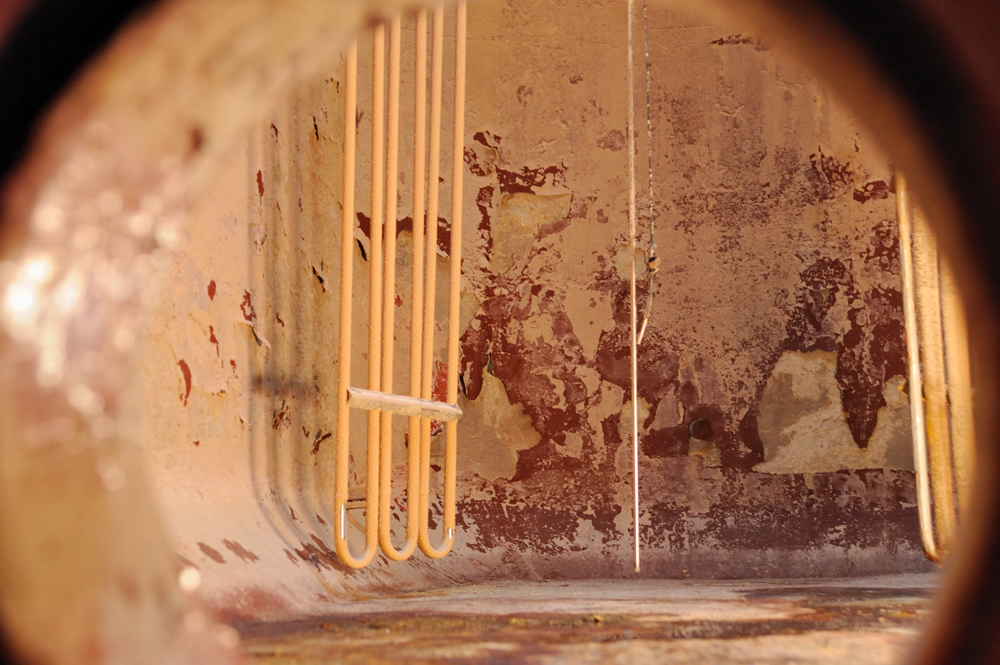
During my exploration of Crete, I had the possibility of visiting various wineries and indulging in a spectrum of intriguing wines. One noteworthy stop was Titakis Winery, nestled in the heart of PDO Peza. As a family-owned venture, it spans three generations of dedicated winemakers. My engaging conversation with the owner and winemaker, Maria Titakis, provided enlightening insights into their winemaking philosophy. I was granted a behind-the-scenes look at their winery operations, followed by an enlightening tasting session that offered a glimpse into their approach to both local and international grape varieties.
Below, I share a selection of the wines I had the pleasure of sampling during my visit, which provide a snapshot of their diverse range:
Delogo White: A blend of Vilana (85%) and Sauvignon Blanc (15%). This light and invigorating wine exudes citrus and tropical fruit aromas. Its refreshingly crisp nature makes it the ideal companion on scorching days.
Moscato Spinas: Crafted from Muscat grapes, this light and refreshing wine boasts delicate notes of roses, lemon blossoms, mint, and green apples. The practice of early harvesting in mid-August preserves its vibrant acidity and moderate alcohol content in hot climate.
Delogo Rosé: A harmonious blend of Kotsifali (60%), Mandilari (30%), and Merlot (10%). Its radiant hue mirrors its invigorating acidity, while the palate is greeted by the fruity symphony of cherries, plums, and pomegranate.
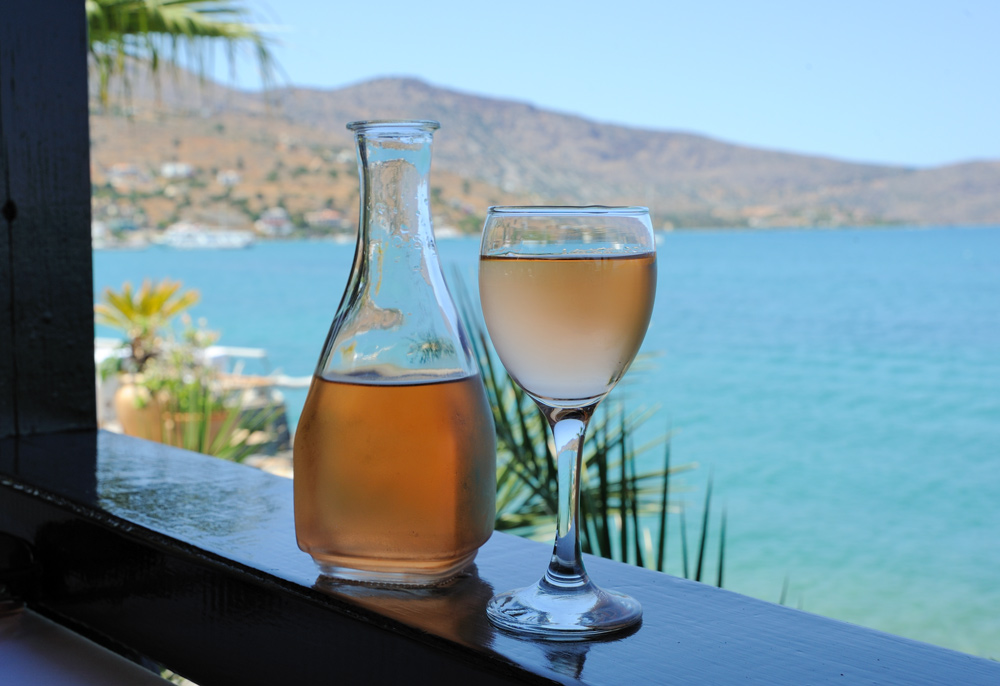
Asteroza Rosé: This unconventional rosé fuses 80% Vidiano with 20% Syrah.
Conventionally, rosé wines are crafted from red grapes, with the depth of color and tannins influenced by the duration of skin contact. Sparkling rosés often involve blending white and red wines.
This rosé embraces an atypical approach, defying tradition by fermenting red and white grapes together. While this practice isn’t entirely unique, it’s certainly an uncommon occurrence. The result, however, is a wine that defies norms and weaves together aromas that rarely share the same stage.
I was genuinely enchanted by the outcome, so much so that I procured a bottle for myself. The wine presents a medium-bodied character with invigorating acidity, elevated minerality, and a symphony of aromas that include red fruits, citrus notes, herbal nuances, and a touch of spice.
In reality, an abundance of good rosés are crafted in Crete. We frequently indulged in the delight of a simple house rosé during our dinners, and without fail, it proved to be a delightful experience. Especially during the scorching days of summer, these rosés are a splendid alternative to weightier red wines. Their versatility shines through when paired with dishes like succulent lamb, making for a truly harmonious dining experience.
Get back to white wines.
Vidiano: A pure expression of 100% Vidiano, this wine captivated me with its rich, velvety texture. Bursting with aromas of apricots, peaches, pears, and floral notes, it harmonizes these flavors with a vibrant minerality and refreshing acidity. Interestingly, its 12% alcohol content imparts a full-bodied sensation, mimicking the character of wines subjected to malolactic fermentation.
Impetus dry white: A blend of 90% Vidiano and 10% Malvasia Aromatica, this wine enjoys four months of aging in French oak. Boasting a full-bodied profile at 12.5% ABV, it presents a captivating melody of mead, peach, pear, nuts, and butter notes. With the potential to evolve further, this wine promises an exciting aging journey.
Red Wines
Merlot-Syrah Blend: This medium-bodied blend combines 60% Merlot with 40% Syrah, offering supple tannins and an aromatic tapestry of cherries, plums, and spices.
Impetus Dry Red: An assembly of Kotsifali (60%), Merlot (20%), and Syrah (20%), this wine ages for 12 months in French oak. Boasting a robust 14% ABV, it envelops the senses with an intense interplay of cherries, plums, figs, and spices. This powerful and impressive wine leaves a lasting impression.
My journey through Titakis Winery was a delightful introduction to Crete’s diverse vinicultural treasures, highlighting their commitment to showcasing both indigenous and international grape varieties in their authentic expressions.
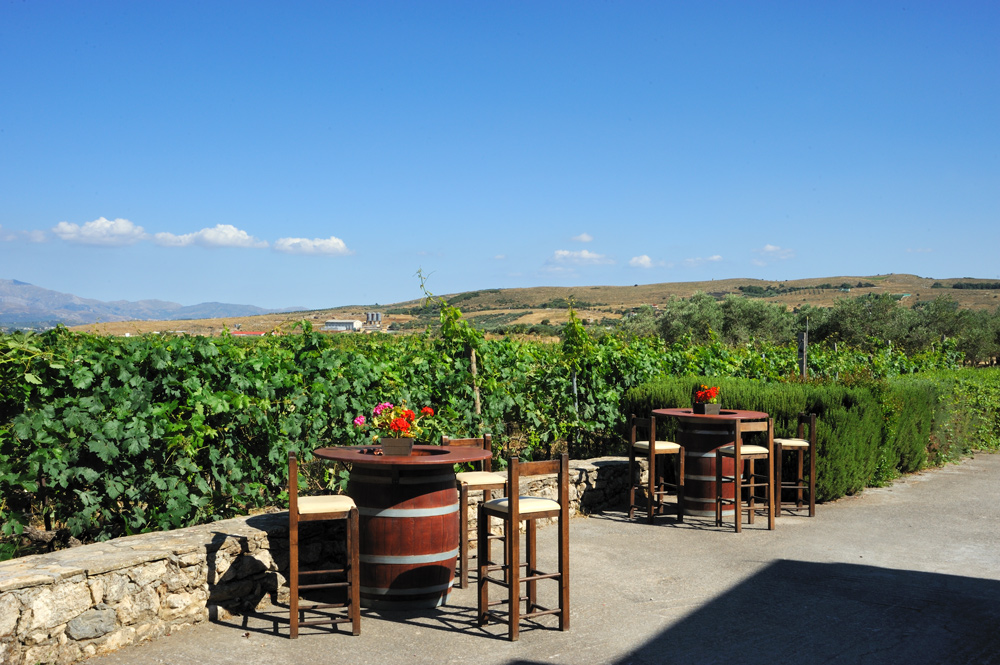
Venturing slightly southward from the same region, one encounters the Lyrarakis Winery. This establishment caters to a substantial number of visitors, offering a spacious and inviting tasting room. However, if your desire extends beyond savoring a glass of fine wine with friends to delving into the intricacies of winemaking, this venue might not fully meet your aspirations. The waitstaff presents wines along with succinct descriptions from the menu.
The wines themselves undoubtedly warrant exploration. The array of pure-varietal whites — Vidiano, Dafni, and Muscat of Spina — pleases the senses with their light, aromatic nature and refreshing acidity.
A rose crafted from Merlot and Liatiko unfolds as a vivid and exceptionally fruity offering.
The Syrah/Kotsifali blend boasts a deep, full-bodied red wine imbued with soft tannins, having spent 18 months in oak barrels, showcasing its potential for aging.
Of particular intrigue was the pure-varietal 8-year-old Mandilari. This variety, known for its high tannin content, is rarely used for single-varietal wines. In this case, the grapes are cultivated on a small vineyard positioned at an elevation of 500 meters, meticulously tended to yield low harvests, resulting in concentrated flavors. Though demanding extended aging, the result is a bold, robust, and impeccably structured wine distinguished by mature tannins.
My own exploration led me through these wines. The winery itself is vast, featuring an array of different grape varieties, predominantly local ones, interspersed with select international options.
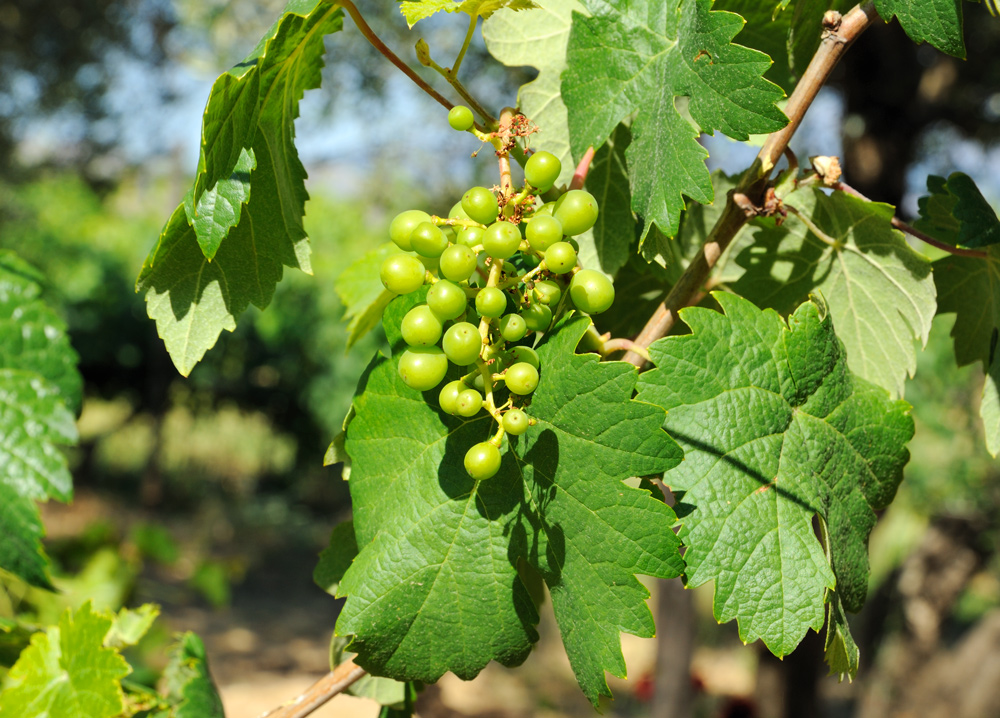
Toplou Monastery
Located at the easternmost edge of the island in Sitia, the Toplou Monastery stands as an embodiment of living history. Established in the 14th century, this monastery has weathered the trials of devastation and restoration, bearing witness to resistance against various occupants while steadfastly remaining a bastion of cultural sustenance. Following a tradition common to Greek and many European monasteries, the monks of Toplou have long cultivated vines and crafted wine for their internal consumption.
Through the centuries, the monastery persevered, and by the late 20th century, it possessed vineyards replete with high-quality old vines. It was during this period that Abbot Filotheos Spanoudakis envisioned a new purpose for these venerable vines. His foresight led to the creation of a modern winery within the monastery’s walls, now producing truly exceptional wines.
Sitia, the region where Toplou Monastery resides, is renowned for its Liatico grape variety. Nestled near the island’s endpoint, the protective embrace of low-lying mountains shields the vineyards from the scorching African heat. The soil, though meager, proves conducive to grape cultivation, while the gentle Aegean Sea winds supply the requisite coolness to preserve the grapes’ natural acidity. This unique climate facilitates the Liatico grape’s ability to accumulate sugars while retaining acidity and aromatic complexity. The monastery adeptly crafts both dry and sweet wines from this variety. For the sweet wines, an additional step involves sun-drying the grapes post-harvest, resulting in elevated sugar concentrations that naturally halt fermentation, culminating in lusciously sweet wines. On the other hand, the dry wines, while full-bodied, exude an exquisite lightness, imbued with enticing aromas and a refreshing character.
Unfortunately, due to pandemic-related restrictions, the monastery’s tasting room was inaccessible during my visit. However, we procured a couple bottles of their wine, and one of them, as I sip it while composing this text, evokes the very essence of that memorable experience.

Exploration of Chania: Karavitakis Vineyard
Nestled at the western extremity of the island, Chania is adorned with the Karavitakis Vineyard, a family-owned winery spanning four generations of winemakers. A resurgence in the winery’s fortunes emerged under the stewardship of Manolis Karavitakis, the current owner. Equipped with knowledge acquired in Athens and Italy, he infused modern techniques while revitalizing local varieties and harmoniously blending them with international counterparts. The result: wines that embody the essence of Crete—captivating, novel, and deeply reflective of their terroir. Manolis’ dedication to the idea of terroir is evident as he meticulously places each variety in the ideal location, harnessing the essence of the land.
Our interaction was both enlightening and delightful. A candid conversation about local viniculture accompanied by an array of tastings heightened the enjoyment of our visit.
Among the wines we sampled were:
Moschato Spinas: Crafted from old vines grown at a lofty elevation of 400 meters, this wine is a testament to gentle craftsmanship. Despite its 13.5% alcohol content, it delights with its subtlety, aromatic richness, and invigorating freshness—a quintessential Muscat.
Kompsos Vidiano/ Assyrtiko/ Malvasia: A harmonious blend, each variety contributes distinct elements. Vidiano imparts peachy notes, Assyrtiko lends structure and acidity, and Malvasia introduces floral nuances. This symphony culminates in a gently aromatic and refreshing composition (again, you never say it is13.5% abv).
Kompsos Liatiko Rose: An exquisite rose, this wine showcases Liatiko’s low tannins and high acidity. Extracted from old vines, it boasts intensified flavors. The aromatic dance of red fruits and white flowers gracefully merges with delicate minerality and citrus undertones.
The Kotsifali Mavrotragano blend combines Cretan Kotsifali (85%) with Mavrotragano (15%), an ancient Santorini variety. Mavrotragano, once exclusive to Santorini, has found its way to Crete due to its resurgence. This grape produces a deep-red wine with strong tannins, suitable for oak aging. The result is a deep-ruby wine with red fruit aromas and smooth tannins. Six months in French oak add structure and a touch of vanilla, creating a pleasant wine.
Karavitakis Vineyard doesn’t merely pay homage to local varieties; it also explores the potential that the Cretan land holds for vines from other domains. A testament to this is the enchanting Elia 2016 blend, a captivating portrayal of their approach.
This composition, a synergy of Syrah (70%), Grenache (20%), and Carignan (10%), is an ode to Languedoc traditions. The vineyard, adjacent to the ancient 3000-year-old olive tree of Vouves, employs low yields to intensify the wine’s essence. Each variety matures individually for 12 months in French oak, culminating in a blend, which proportions are balsnced yearly depending on component’s taste.
Although our journey encompassed dry wines, it’s worth noting that the winery also produces the traditional sun-dried Romeiko dessert wine, Marouvas.
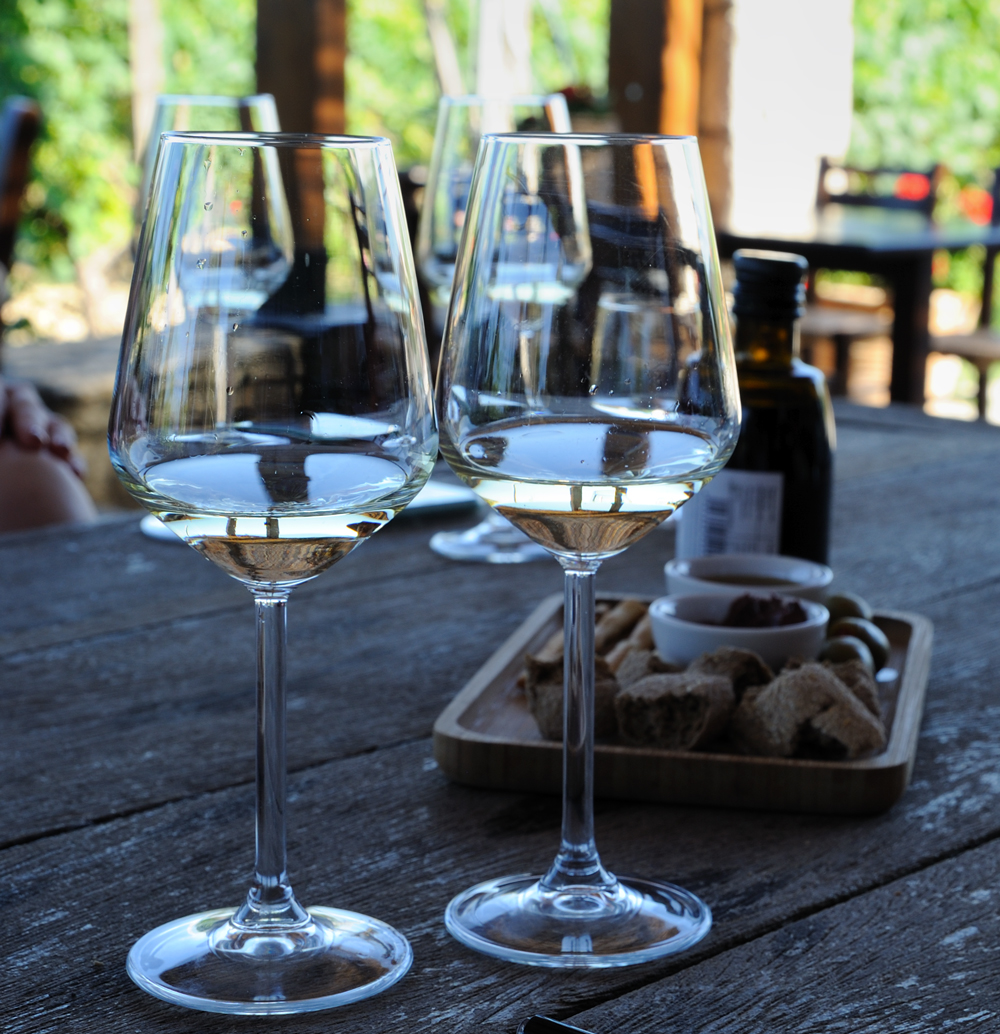
The second winery from the Chania region, rounding up my story, is Manousakis Winery. Their primary wine line, called Nostos, translates to “returning home.” Ted Manousakis, the winery’s founder, was born on Crete but moved to the US during his childhood. He achieved success in a non-wine-related business but eventually yearned for his homeland. Returning to Crete, he planted the first vines in his new vineyard in 1993, with the help of a dedicated crew. His winemaker opted for Southern French varieties such as Syrah, Grenache, Mourvèdre, and Roussanne, which remain the main focus, though some Greek varieties were later introduced.
Similar to Lyrarakis Winery, the tasting room at Manousakis Winery offers a pleasant space for relaxed drinking rather than in-depth conversations with the winemaker. While the wines are of high quality, they don’t fully encapsulate the local essence.
Wines I tried:
Nostos Assyrtiko: A splendid Assyrtiko, full-bodied with bright notes of peaches, citrus, good minerality, and a hint of the sea.
Nostos Muscat of Spina: A refreshing wine with hints of white flowers, peaches, and herbs, perfect for appetizers.
Nostos Roussanne: Classic southern Rhône style, well-aged in oak, and quite enjoyable.
Rose Grenache-Syrah: A Mediterranean-style rose with vibrant flavors of strawberry, rose, and grenadine.
Grenache: A good representation of the variety.
GSM (Grenache-Syrah-Mourvèdre): A beautiful, intense, full-bodied wine with soft tannins and a blend of black fruits, leather, and ripe tannins. Oak aging adds structure.
GSM with Roussanne: A further enhancement of the previous GSM, enriched with complex Roussanne notes.
Crete is becoming an increasingly appealing destination for wine enthusiasts. Look for Cretan wines in stores, and if you visit the island, set aside time to explore its local wineries.